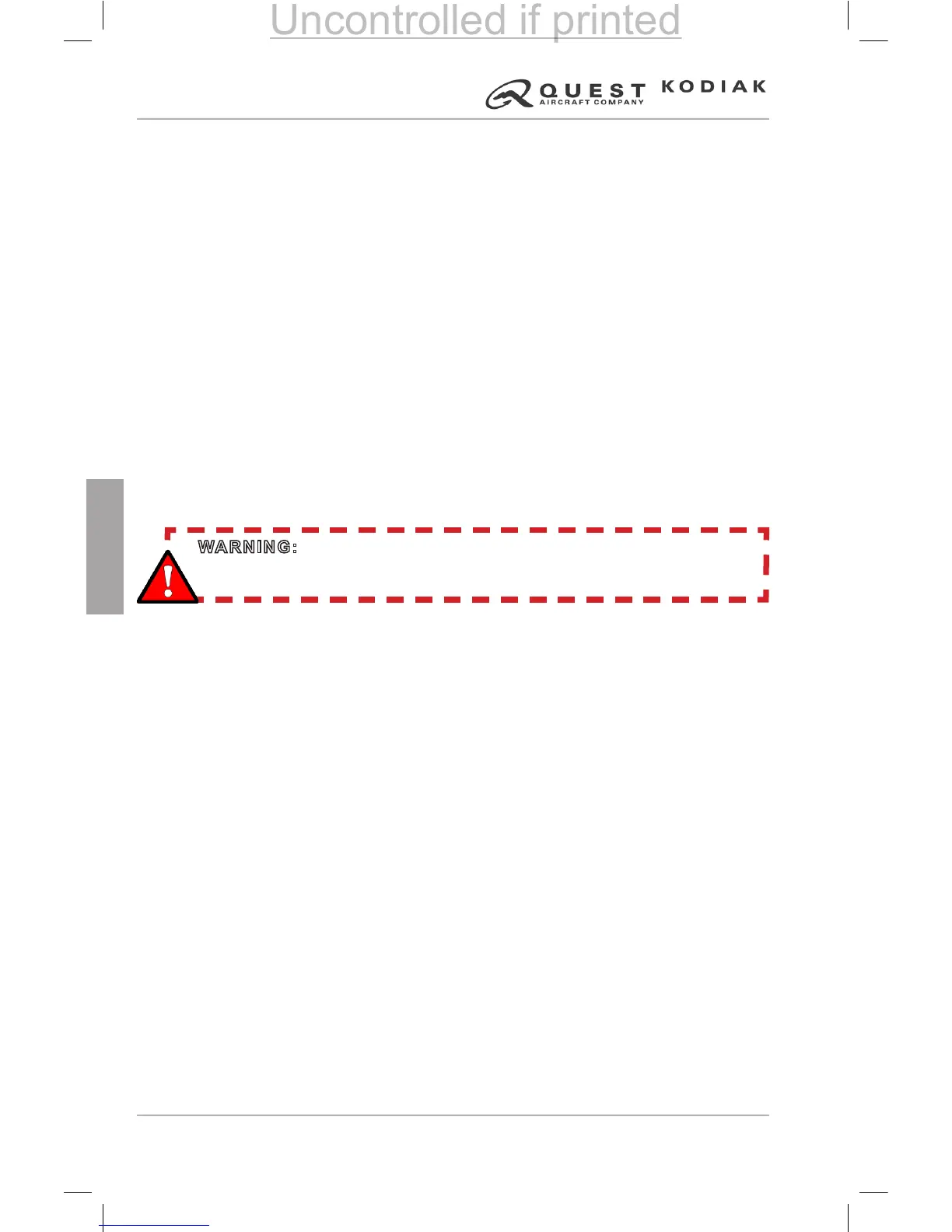Ground icing conditions are dened as:
• An outside air temperature of 41°F (5°C) or less with visible moisture
present (i.e. rain, drizzle, sleet, snow, fog, etc.).
• When operating on ramps, taxiways, or runways where surface snow,
ice, standing water, or slush may be ingested by the engine or freeze
on the engine, nacelle or engine sensor probes, or may adhere to the
aerodynamic surfaces.
• When conditions are conducive to active frost formation, e.g. a clear
night with a dew point temperature/outside air temperature difference of
5° F (3° C) or less.
AIRSPEED LIMITATIONS
The minimum airspeeds for operations in icing conditions with a fully
functional TKS Ice Protection System operating are:
Flaps 0°
......................................................................................... 110 KIAS
Flaps 10-20°
.................................................................................... 85 KIAS
Minimum holding speed:
Flaps 0°
.........................................................................................120 KIAS
The maximum airspeed for operations in icing conditions with a fully
functional TKS Ice Protection System operating is:
Flaps 0°
.................................. 168 KIAS or 190 KTAS, whichever is slower
FLAP LIMITATIONS
The ap settings for operations in icing conditions with a fully functional TKS
Ice Protection System operating are:
Climb
...............................................................................................Flaps 0°
Cruise
..............................................................................................Flaps 0°
Landing.......................................................................Flaps 20° (Maximum)
Do not extend the aps beyond 20° for landing with ice suspected on the
airframe or when operating in icing conditions.
WEIGHT LIMITS
There are no additional limitations on the maximum allowable takeoff weight
into known or forecast icing conditions for aircraft equipped with the TKS
Ice Protection System. The maximum allowable operating weights for the
aircraft are:
Max Ramp
.......................................................................................7305 LB
Max Takeoff
.....................................................................................7255 LB
Max Landing
.................................................................................... 6690 LB
Max Zero Fuel Weight
.....................................................................6490 LB
WARNING: Holding in icing conditions for longer than 45 minutes
may reduce margins and could result in inadequate handling and control
characteristics.
